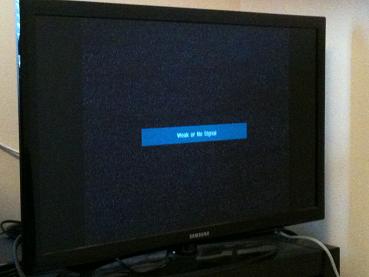LCD Television
From SDA Knowledge Base
| Max Resolution | 1080p |
| Possible A/V Inputs | RF, S-Video, Composite, Component, HDMI |
| Display Lag | Varies |
| Weight | Varies |
| Availability | Widely Available |
*Note: Not all CRT TVs have component or S-Video inputs. There are ways to work around a CRT TV not having S-Video inputs, but if your CRT TV doesn't have component connectors then this means that recording footage at 480i with component cables is not an option.
For our purposes, we're going to lump every television into two categories. There are the CRT TVs and then there's everything else. The page is named LCD TVs and while there are different kinds of LCDs and there are also plasma TVs, the important thing to understand is that all these technologies have something in common. They all have a little problem called display lag. By display lag, we mean the moment of time from when the television receives the video signal to the time that it is displayed on the television screen.
Display Lag
With a CRT television, as soon as the TV receives the video signal it is instantaneously displayed on the screen. With an LCD or Plasma television, some processing of the image is required and this introduces a certain amount of display lag. How much display lag depends on a variety of factors. How much display lag affects your gameplay depends on the game and how well you are able to adjust to it. In the images below I have a CRT TV on the left and an LED LCD TV on the right. I've hooked up F-Zero GX running at 480i from the Wii. The composite cables are hooked from the Wii into a powered splitter and the splitter is sending the video signal to both televisions at the same time in the picture on the right. I rearranged the TVs to be close to each other for a screenshot. The CRT is on top and the LCD is on the bottom. Notice how the timer is showing 6'319xx on the LCD and that it is just about to move up to 6'32. The CRT has already displayed 6'32'0xx.
Reducing Display lag
- Find the right TV - Not all LCD TVs have the same amount of display lag. How much lag there is varies widely across different models. The good people of Shoryuken have put together some listings of televisions with minimal display lag.
- Match your console's resolution settings to your TV's native resolution settings -
If you are using a modern console, set the console's resolution settings to match the native resolution of your television. If your TV's native resolution is 1080p then changing your console's resolution setting to 1080p will prevent the console from having to resize the image
Disadvantages
- Weight - The weight of a CRT TV increases rapidly as the screen size increases. A 20 inch model weights around 50 pounds. A 25 inch model may weigh more than 100 lbs. This makes the televisions hard to pick up and maneuver.
- Availability - CRT TVs are no longer being manufactured as they have been replaced by LCD, Plasma, and other newer models. You will usually have to find a thrift shop or pawn shop in your local area and pick up these models in person. It is rare for these televisions to be sold online and even rarer to find shipping for these models.
- Limited resolution support - Modern consoles have the option of outputting video footage at resolutions that are high definition. These signals will not be recognized by a CRT TV. This makes high definition capture out of the question with these models.
HD CRT TV
For a brief period of time, TVs that used CRT technology were manufactured that had support for high definition resolutions such as 720p and 1080i. HD CRT TVs are extremely uncommon. They have a few attributes which make them less ideal for speedrunning than traditional CRT TVs.
- Unlike standard CRT TVs HD CRTs have a native resolution and will process video signals to match it. This means that they have display lag.
- HD CRT models are usually available in models 26 inches or larger. This makes most models weight over 100 lbs.
- HD CRT TVs were manufactured for a very short period of time. They are even more difficult to find in person. If you find them online they usually require local pickup instead of shipping


